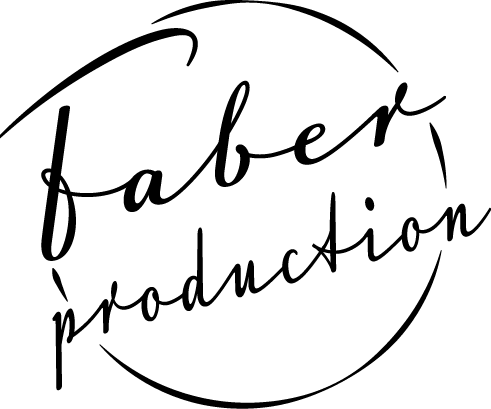Link to event: https://hubs.mozilla.com/beGwLWf/tutorial
Link to personal project room: https://hubs.mozilla.com/4RemhTj/fabriziopopescu
Role 3D Environment Creator and Content Manager
Tools Cinema4D, Photoshop, Spoke by Mozilla
The Problem
Every year the Brunel Digital Media students volunteer to create a showcase for their fellows to present projects to industry people. This year a team of 13 creative and enthusiastic students had to create a new branding, design a book, market and manage the final degree show. Together with Douglas Marshall, VFX student, we offered to bring a new and immersive element to the event by creating content for the 180 degree dome of the University. Unfortunately the show got cancelled due to the pandemic situation and so the opportunity of presenting student work to guests in an engaging way.
Solution
Once the even was officially cancelled, I researched solutions to host a virtual event for students to showcase their projects and interact with industry people. After testing multiple platforms which offered solutions from 360 photos and 3D renders I narrowed down the options to WebXR enabled platforms. WebXR is an API that offers support for 3D rendering in the browser and can be accessed through virtual reality and augmented reality hardware but also through a laptop, phone or any other device. Hubs by Mozilla is a social VR app that runs entirely from your browser. Looking at examples from the community I quickly realised this is the best immersive solution to present our digital projects during a social distancing period.
Plan
The plan was to organise a virtual event that would bring together 50+ students and industry people. You can create a Hubs Virtual rooms by remixing assets from the community or by creating a room from scratch using Spoke by Mozilla. Spoke is an online 3D scene editor that offers the necessary tools and assets to build a scene. The beauty of this software is that it can import 3D models created in your desired 3D software package like Maya, C4D or Blender. Before starting creating custom assets we conducted a SWOT analysis on the platform:
Strengths
Virtual event during pandemic isolation;
Saves time for industry people;
Impressive virtual features;
More accessible to everyone;
Weaknesses
Make sure we optimise the rooms;
Opportunities
Be more creative with the event layout;
Showcase our FYP and portfolio in a more creative environment;
Threats
Microphone problems;
Server and internet problems;
In the original project plan we discussed the virtual exhibition features, the submission requirements for students that agreed to participate, way of optimising the exhibition and the guests experience.
Moodboard
Inspired by the Van Gogh Immersive Exhibition, the first version of our event was featuring one big space to host all students. Each student would have been given a portrait banner to show their posters.
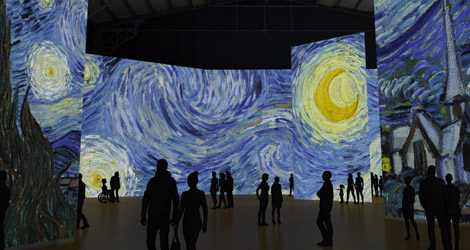
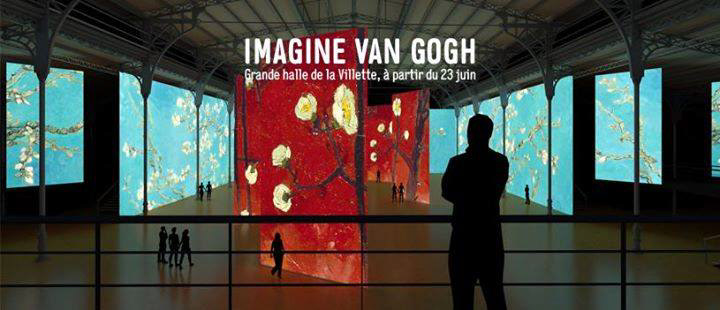
Development
Here are screenshots of the main event room initial designs. Unfortunately, this design was not feasible because one room can only host up to 25 people at the same time without having performance issues.
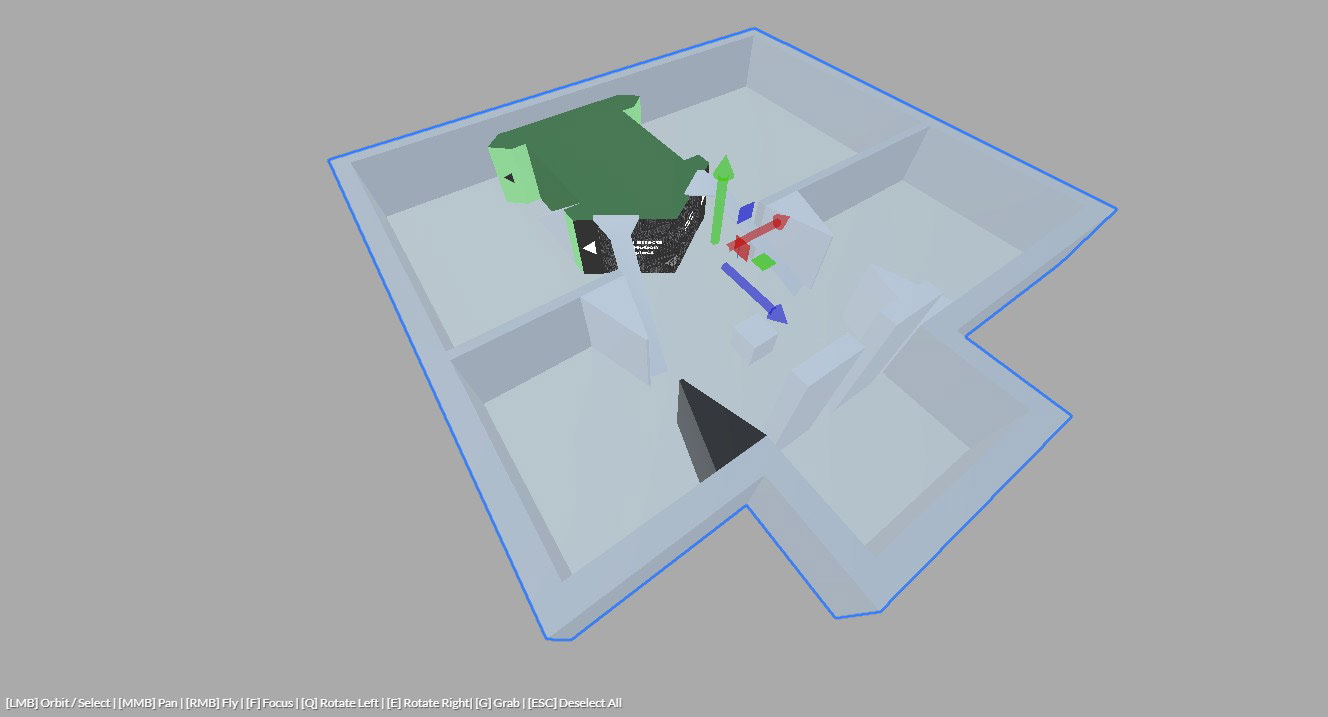
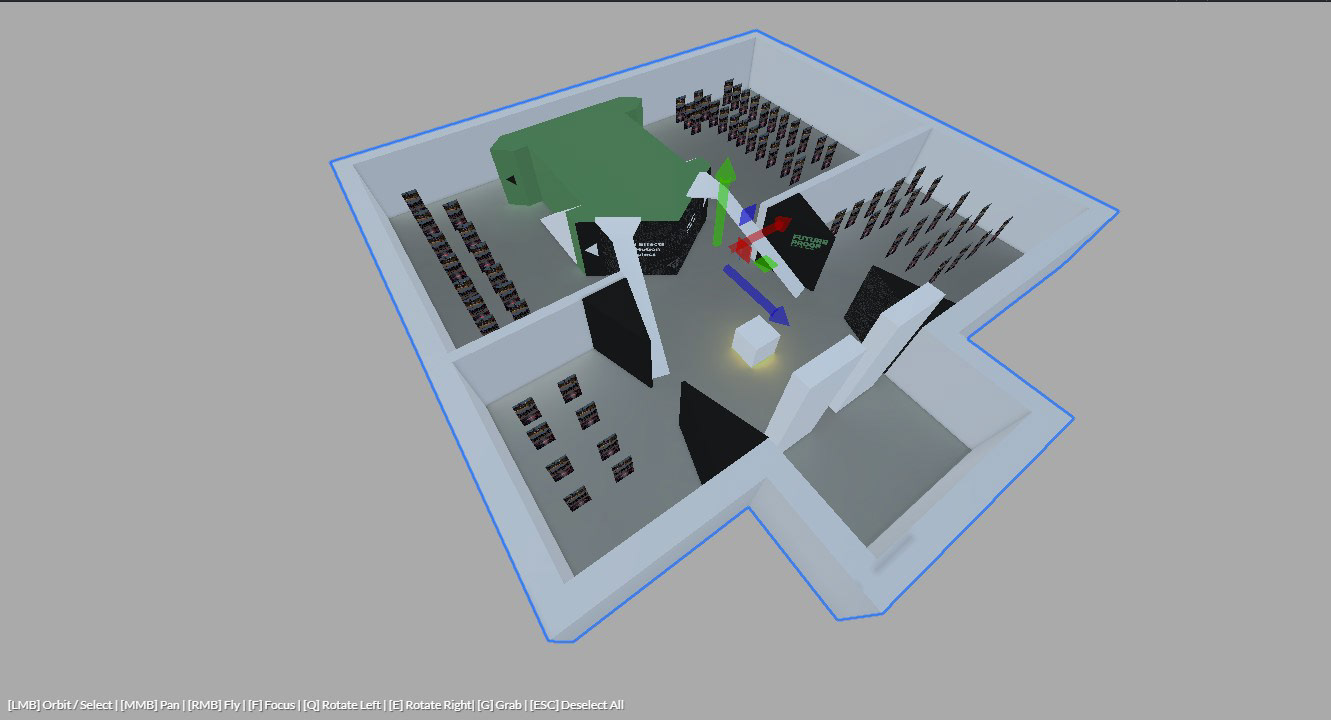
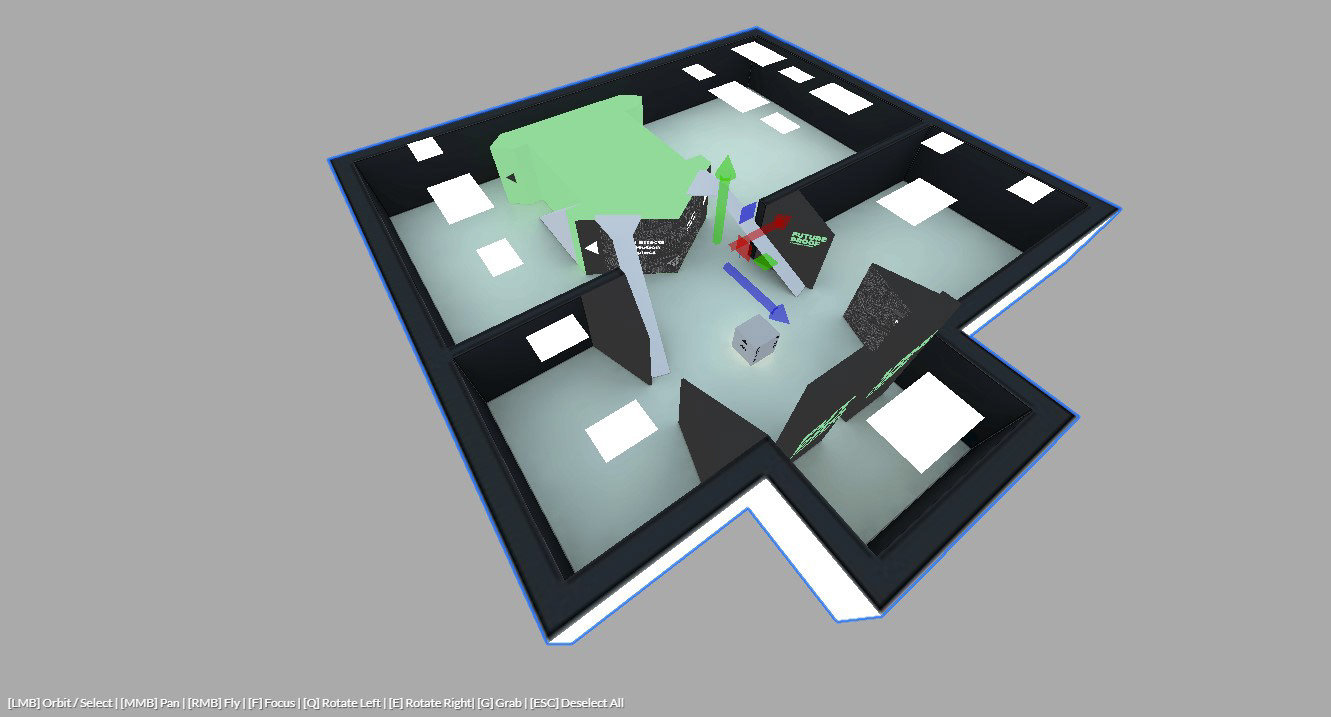
The solution to this problem was to create a smaller main hub with links towards separate course rooms (Visual Effects & Motion Graphics, Digital Design, Master students and Level 1&2 students). Each course room has the same design template, but features different student work. Next to each student there is a link to an individual room. Here every student can personalise their room with assets and links to projects. The sound within each room was adjusted for different scenarios. The main hub has a linear sound distance model to make speaking announcement loud and clear. The course rooms feature an exponential distance model to make closer conversations easier to follow. The purpose of the individual room was to offer the students a separated space to explain their project to the industry guests and receive feedback.
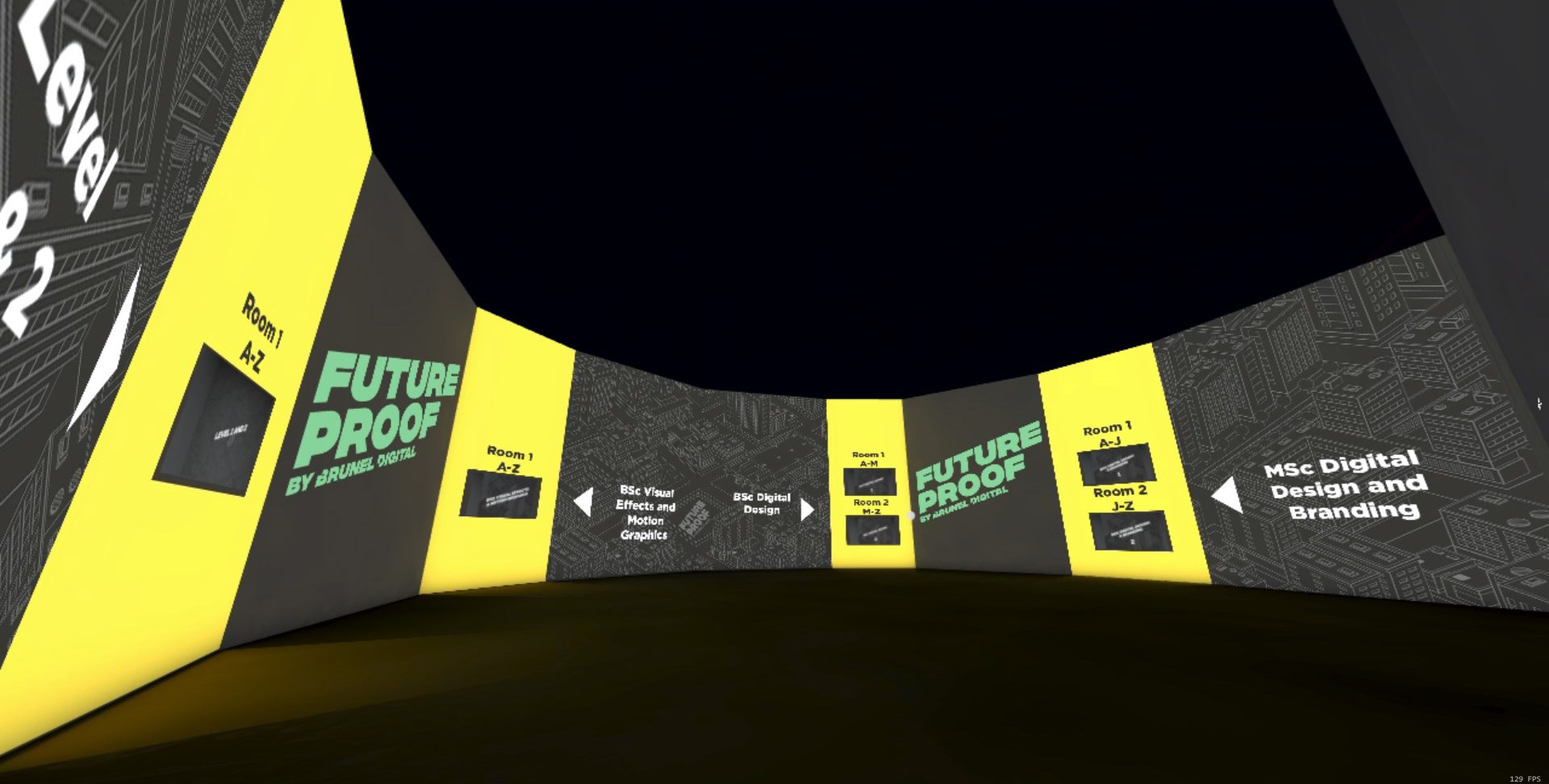
Main Hub - with links to course rooms
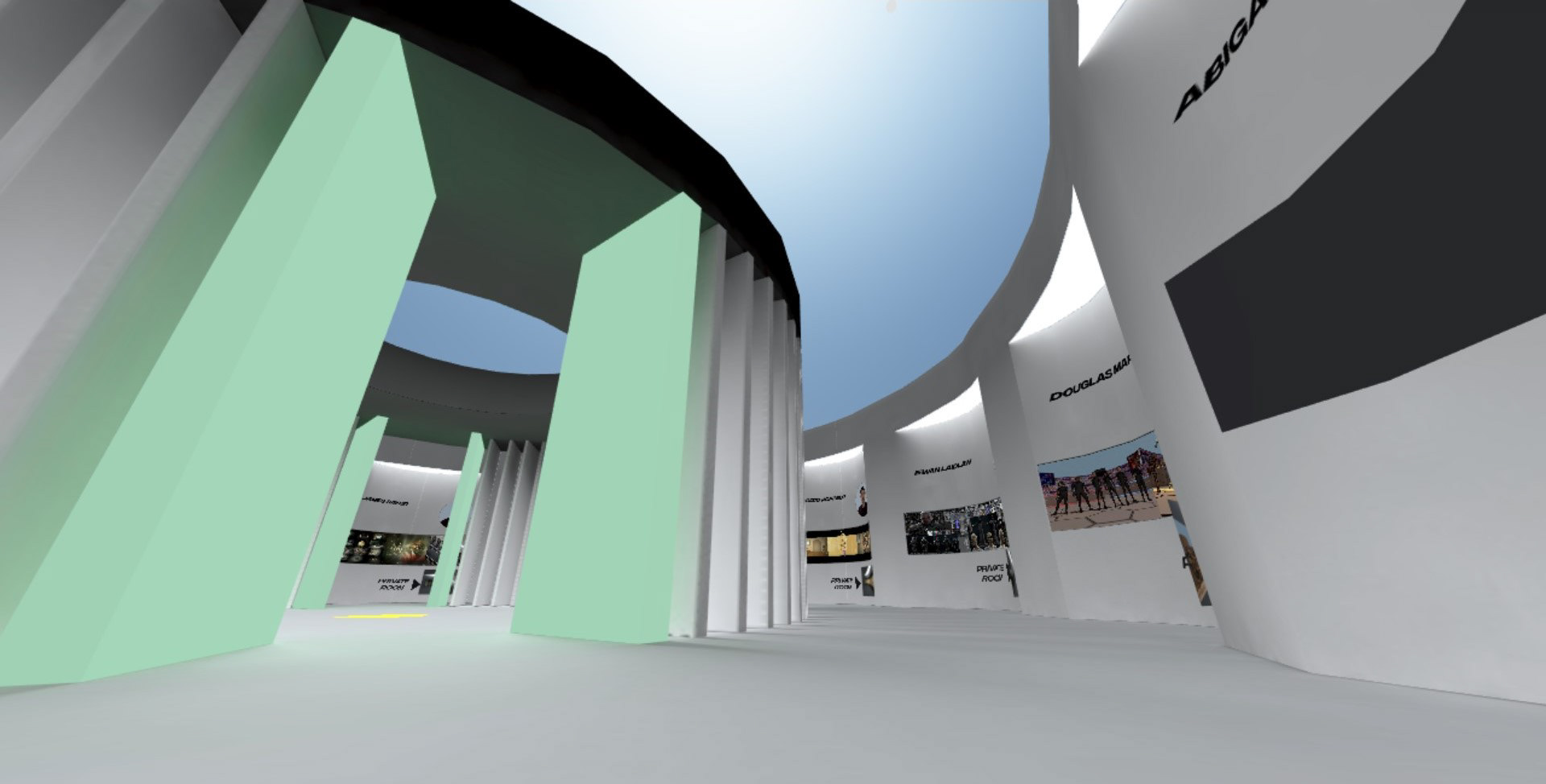
Course Room Template

Individual Room Template
All the environments were created in Cinema4D. An organised mesh, UVs and texture system was needed to keep the assets as low as possible for best performances. I baked the lights, shadows, reflections and global illumination into the textures. The final rooms were exported as binary glTF file format into Spoke by Mozilla. Inside Spoke I linked the rooms together, set the spawn point and adjusted the sound settings.
This is my final year project personalised room:
Reflection
The FutureProof Virtual Showcase hosted on the 21st of May 30 students and 34 industry people offering real-time conversations and opening opportunities for feedback and industry connections to students. We received a lot of positive feedback from industry professionals and faculty staff.
